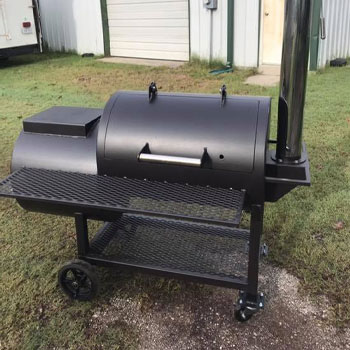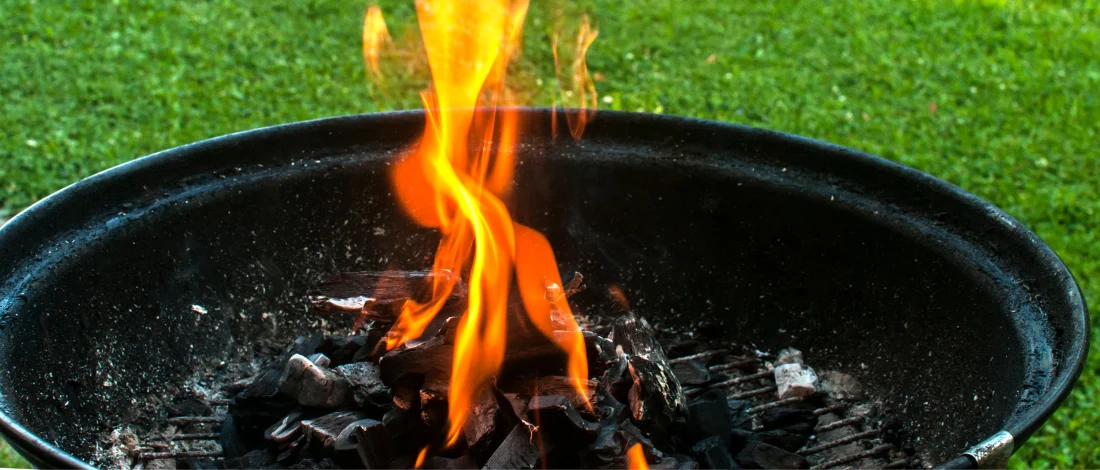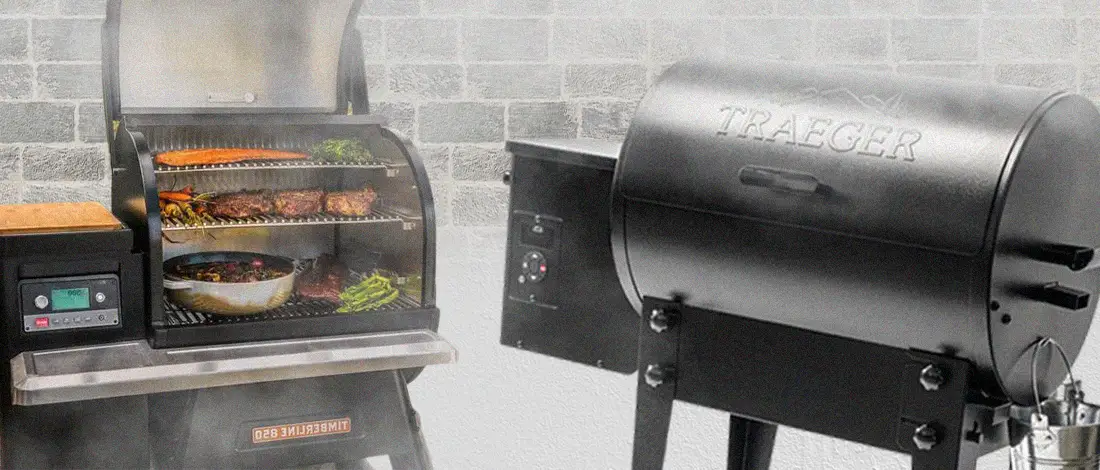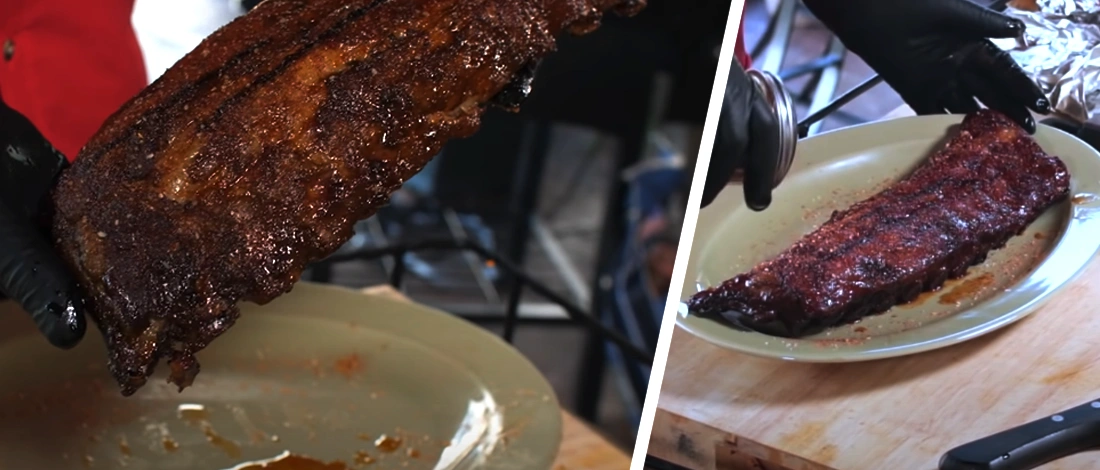I love smoked meat. Smoking is like a small revolution in BBQ, where you can cook almost everything on the grill and create delicious meals.
At Carnivore Style, we understand that it’s not easy. Exhaust vent, top vent, different smokers, adjusting the lid, hot air, varying temperatures, long hours—it's a school you need to pass to become a master in grilling food.
To get the best results, the most important lesson you need to learn is how to regulate the temperature in a smoker.
Quick Summary
- To regulate temperature in a smoker, one must adjust the smoker temperature using charcoal, wood chips, and chunks, maintain the ideal temperature between 200ºF and 250ºF, and add fuel every 2 hours.
- Airflow is crucial in the cooking process. By adjusting the intake damper vent and exhaust vent, one can control the temperature.
- According to a 2019 study in the National Library of Medicine, cold smoking does not exceed 30°C and is used for flavoring and shelf-life extension, while hot smoking reaches temperatures of 60–85°C, cooking the food thoroughly and is preferred for preserving fish [1].
- Using a water pan can increase moisture, control the grill's heat level, and prevent the meat from drying out.
4 Steps On How to Regulate Temperature in Your Smoker
Correct cooking means grilling and smoking ingredients slowly, at a low temperature.
If you want perfectly prepared meats, you need to know the right way to create, adjust and maintain the temperature in your smoker.
1. Adjust Smoker Temperature

To set the right temp, you need to build a big fire. Use the best charcoal, wood chips, and chunks to adjust the temperature. Their combination will help you to get great results.
Why? Wood chips will generate higher temperatures and more smoke, so they are ideal for short smoking times. Using wood chunks will be a steady supply of smoke and low temperature for long hours.
Briquettes will burn longer and help stabilize the temperature for a long time. Natural lump charcoal will make your fire burn slowly and have the best impact on flavor.
Keep in mind that the ideal temperature between 200ºF and 250ºF is crucial for the best results. If you put your food in a cold place, it will lose its moisture fast, which will affect the taste.
If you heat the chamber a lot, food will overcook and lose its flavor. Check the temp regularly. Add additional fuel every 2 hours and try not to open the chamber often.
Recommended Article: Learn How to Use Wood Chips in an Electric Smoker
2. Use Smoker Air Vents
Airflow is essential in the cooking process. In a grill or smoker, you regulate it by opening and closing dampers, chimney, lid, the intake damper vent, and exhaust vent.
The chimney temperature should be around 225°F, so to maintain it, you should adjust dampers and vents before you reach it.
That’s why adjusting vents is crucial in the cooking process. There are 2 types of vents that most smokers have, one at the top and one at the bottom. An intake damper is a bottom vent where the oxygen comes into the smoker.
A top vent is called an exhaust damper, usually located near the smoker’s top, which helps the smoke circulate inside the chamber and exit it.
To heat the grill, open the lid and vents to put more air inside. To decrease the temperature, close the lid and vents.
If you close the lid completely, the hot air inside will make the smoke darker and drier, affecting the taste of the meats.
Once the fire is burning properly, partly close the vents at the bottom and begin the smoking process.
If you see that the meat surface dries too quickly, check if all vents are closed. If yes, you should open it to avoid side effects like cavities in the middle of the meat.
If you are using a smoker grill with charcoal, there are two things you should control frequently: the charcoal itself and the oxygen that circulates through the smoker.
If you see that the heat drops, check if there is enough lit and unlit charcoal at the bottom before opening the vents.
3. Maintain the Temperature

Smoking can last for hours, so make sure to adjust the temperature close to 225°F during the whole process. Fuel should burn lightly to reach a very high temperature, making the chamber very hot and developing less smoke.
Maintaining the heat will depend on two things: on adding fuel and on regulating the oxygen level with intake damper and exhaust damper.
Our advice is to take a closer look at the lid, vents, and dampers to regulate the oxygen level in grills. You may need some help, but you will become better next time if you take notes during the process.
Maintaining the temperature means using the right quantities of fuel. Have it ready even before you reach the desired heat.
If you use charcoal, have in mind that it needs some time to heat up, but the temperature will rise fast when it does. This can create higher temperatures in the smoker, resulting in smoking only partially your meat.
4. Use Water Pan
During smoking or grilling, pork and beef lose its moisture, affecting the final taste. If the heat is high, moisture will disappear even faster, leaving dry meat outside and raw meat inside.
There are several ways to increase the smoker grill’s moisture with water and keep the right temperature in it.
The best way is to get a water pan and put it on the bottom. It will create the steam needed for the meat to get the moisture it loses from the hot air and control the grill’s heat level.
“Scatter soaked hardwood, chunks over your coals for a quick and easy way to add a smoky nuance to your grilled foods.”
- Emeril Lagesse, Chef
Tips on How To Achieve the Perfect Temperature

Adjust the Quantities of Wood and Charcoal
Temperature control is all about achieving a balance between the heat you are adding in the chimney and the one you are losing through the body of the smoker grill.
To control this process and hold a stable temperature, try to have a light burning of fuel.
Check how much fuel you are adding during the cooking process. With the correct use of top-quality wood and the best charcoal, you will achieve slow cooking BBQ and tasty food.
Also Read: How to Control Charcoal Grill Temperature
Get a Good Thermometer
Depending on the type of smoker, you can adjust the air intake and exhaust with vents. It can help to create and maintain the right temperature, but this requires time and experience.
However, the best way to control what is happening inside the smoker is to put a thermometer and a hygrometer in it.
Many modern smokers have inbuilt thermometers, but in some cases, they may not be reliable. Get one reliable electric thermometer to monitor the smoker’s temperature.
Apart from the basic thermometer, you may like dual models that can control the temperature inside the chimney and take a close look at the meat’s temp.
If you want to have full control of the temperature and not to worry that something will go wrong, try a smoker temperature control system that can even adjust the right temperature.
Check Weather Conditions
According to the US Department of Agriculture, weather conditions and outside temperature can affect the smoker's ability to hit the target temp and the amount of fuel you burn during grilling. [2]
If your smoker grill is made of thin steel sheets, this will be more of a problem as the smoke chimney will lose its heat much quicker. Add the wind, and the problem can become worse.
Make sure that the smoker is in a sheltered spot out of any wind. Take something like a welding blanket or rock wool insulation, drape it over the smoker grill body, and use it to provide insulation.
Don’t Open Smokers Frequently

When you open the intake damper, you allow more oxygen to come inside the chamber. This can be good if you need air to pass through your chamber and go out from the exhaust damper and affect the cooking process.
However, to keep the right fire size and the smoke level, do not open the intake damper if there is no need. Adding more oxygen will increase the temperature and affect the flavor.
When you have finished cooking, you can open the door, intake the damper, and exhaust the smoker’s damper to ventilate and leave it open until the next time.
Related Articles:
At Carnivore Style, we know that mastering the art of smoking meat is a true passion for BBQ lovers. It takes patience, practice, and proper temperature control. As you refine your skills, make sure to check out our other guides to enhance your grilling expertise. We'll help you get the most out of every BBQ session.
References:
- https://www.ncbi.nlm.nih.gov/pmc/articles/PMC6963550/
- https://www.fsis.usda.gov/wps/portal/fsis/topics/food-safety-education/get-answers/food-safety-fact-sheets/meat-preparation/water-in-meat-and-poultry/CT_Index








